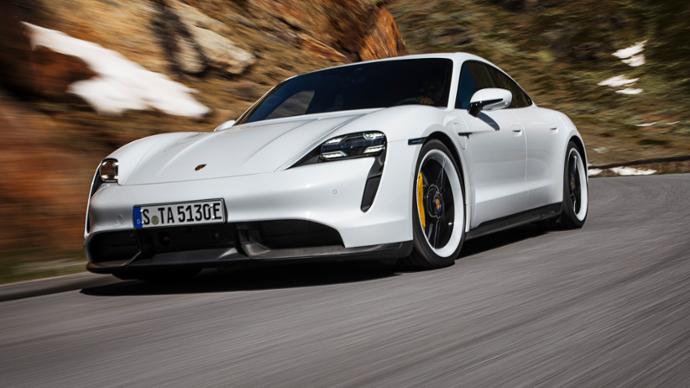Board Member for Technical Development Welsch to focus on concepts, design and strategy at Technical Development of Volkswagen Passenger Cars and on steering Research and Development in the Volkswagen Group Dr. Matthias Rabe, Head of the Technical Development Operations area at the Volkswagen Passenger Cars brand, is to take on additional responsibilities in Technical Development… Continue reading @VW Group: Matthias Rabe CTO of Volkswagen Passenger Cars brand
Tag: VW
@VW Group: ŠKODA is expanding access to Connect services
Intelligent voice assistants, such as Google Home and Amazon Alexa, are becoming increasingly popular and make everyday life easier. ŠKODA has taken this into account with ŠKODA Connect Amazon Skill and the new Google Home ŠKODA Connect Action and extended new functions. With both voice assistants, the current parking location and vehicle data can be… Continue reading @VW Group: ŠKODA is expanding access to Connect services
@VW Group: Blume: “A typical German discussion”
Mr Blume, the word on everyone’s lips is climate protection. Have you changed your behaviour as a result? Oliver Blume: Yes, all the attention towards climate change over the last few months has caused me to reflect on and adapt my own behaviour. Even if it’s just meant changing smaller things such as using public… Continue reading @VW Group: Blume: “A typical German discussion”
@VW Group: Audi networks with traffic lights in Düsseldorf
Audi is moving ahead with networked traffic lights in Düsseldorf. After Ingolstadt, the city on the Rhine is the second in Europe in which Audi is introducing its Traffic Light Information service. At the end of January, Audi drivers will see information from around 150 traffic lights in their cockpit, thus increasing their chance of… Continue reading @VW Group: Audi networks with traffic lights in Düsseldorf
2020 Hyundai IONIQ Electric Boasts 37% More Driving Range
Hyundai Motor America has announced prices for the eco-friendly 2020 IONIQ Electric car. The redesigned 2020 IONIQ Electric delivers 170 miles of range, technology and advanced standard safety features at a starting price of $33,045 for the well-equipped SE model. Customers may receive the available federal tax credit of up to $7,500i making the net… Continue reading 2020 Hyundai IONIQ Electric Boasts 37% More Driving Range
BMW Hydrogen VP Says FCEVs Could Be As Cheap As ICE By 2025
Manufacturers seem quite torn on the matter of fuel cell electric vehicles – there is certainly no industry-wide consensus on the matter. Some are adamant this means of propulsion is superior to battery powered EVs and that it’s the future, while others say that even though it has advantages, its considerably higher cost keeps it from… Continue reading BMW Hydrogen VP Says FCEVs Could Be As Cheap As ICE By 2025
Renault turns to VW’s De Meo as carmaker seeks fresh start
PARIS (Reuters) – Renault’s (RENA.PA) Tuesday named Luca de Meo, the former head of Volkswagen’s (VOWG_p.DE) Seat brand, as its next chief executive, as the carmaker looks to draw a line under a year of turmoil by finalizing a long-awaited management shake-up. De Meo’s appointment fills one of the big gaps left at the French… Continue reading Renault turns to VW’s De Meo as carmaker seeks fresh start
French carmaker Renault names Luca de Meo as new CEO
FILE PHOTO: SEAT President and CEO Luca de Meo attends the 89th Geneva International Motor Show in Geneva, Switzerland March 5, 2019. REUTERS/Pierre Albouy/File Photo PARIS (Reuters) – French carmaker Renault REN.PA on Tuesday named former Volkswagen’s (VOWG_p.DE) Seat brand executive Luca de Meo as its new chief executive, as Renault moves to create a… Continue reading French carmaker Renault names Luca de Meo as new CEO
Karma Automotive to build electric truck and SUV from Fisker’s ashes
Karma Automotive, the automaker previously known as Fisker Automotive, is working on an electric pickup truck and SUV, Bloomberg reports. The company plans to show off a concept version of the pickup before the end of the year, and eventually sell it with a starting price that’s less than its $135,000 Karma Revero. Both vehicles… Continue reading Karma Automotive to build electric truck and SUV from Fisker’s ashes
Audi Struggles With e-tron Production Because Of Suppliers
According to the French and German media (via electrive.com), Audi has serious problems with meeting its own production targets for the all-electric e-tron SUV in Brussel, Belgium. The company is reportedly struggling with a lack of parts for battery packs (some sources say more precisely that the lithium-ion cells are the bottleneck). As a result,… Continue reading Audi Struggles With e-tron Production Because Of Suppliers
